©Marlene Condon
March 7, 2020

With St. Patrick’s Day coming up and the color of green appearing all around the area in honor of this holiday, I’d like to share information about a wonderful wildlife plant that is green all the year around — the very common Virginia Cedar. Also known as Red Cedar, Eastern Red Cedar, Juniper, Red Juniper, and Virginian Juniper, this plant is best looked up in books by its scientific name: Juniperus virginiana.
Its thick growth provides shelter in wet and cold weather for roosting birds, such as Dark-eyed Juncos and White-throated Sparrows that travel south to spend the winter in our area. Virginia Cedar also furnishes nest sites for such common suburban birds as Northern Mockingbirds, American Robins, and Song Sparrows. Virginia Opossums, Black Bears, and many species of song and game birds love its fruit.
The ripe fruit of Virginia Cedar is berry-like and blue-black with a grayish waxy bloom (a delicate coating on some fruits, such as blueberries), but this fruit is technically a cone—tipping you off to the fact that the Virginia Cedar is a conifer (which means cone-bearing). Cones have many overlapping scales that are normally woody, but in junipers, the scales are fleshy and have coalesced or fused together, causing the cone to resemble a berry.
These trees are dependent upon the wind for pollination. Pollen produced by male cones is blown to female cones in which seeds develop. Thus, if you want to grow fruit-bearing cedar trees, you need to have at least one male and one female. Please note, however, cedars are an alternate host for Cedar-Apple Rust (a fungus). If you grow apple trees, you might not want to have cedars near them.
Each fertilized cone contains two seeds that are consumed when animals eat it. The seeds pass through the digestive tract unharmed and produce seedlings in new locations.
One animal that was named for its conspicuous consumption of these cones is the Cedar Waxwing. Appropriately enough, the very first time I ever saw Cedar Waxwings, they were eating berries in a Virginia Cedar tree outside my kitchen window!
Another animal that depends upon cedars is the Juniper Hairstreak. Its caterpillar feeds upon our Virginia Cedar, making this evergreen tree vital to the perpetuation of this species of butterfly.
Because our Virginia Cedar is so common, many folks consider it a “trash tree”. Farmers dislike this plant because it perpetually tries to “invade” their cow fields, but this occurs because cedar is a colonizer.
After half-ton cows have been walking over an area for many years, you can imagine how much they’ve condensed the earth beneath their hooves! Cedars and other colonizers, such as Broomsedge, can grow in such compacted soil and/or nutrient-poor areas to revitalize it for later use by plants with more-demanding growing requirements.
Perhaps if you have thought that this tree was nothing more than a “weed”, you will now think more highly of it. Virginia Cedar is a great tree for both our wildlife and our environment.





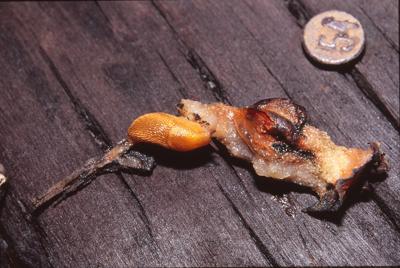
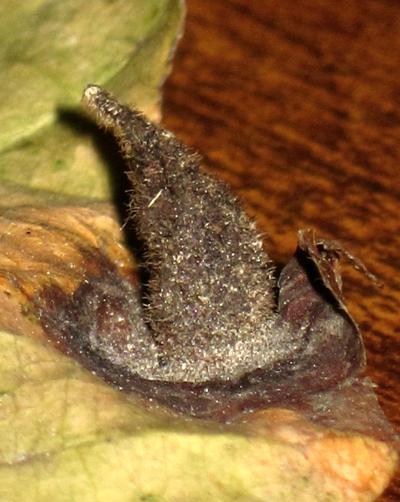
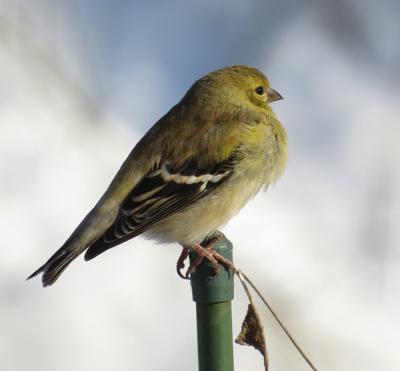
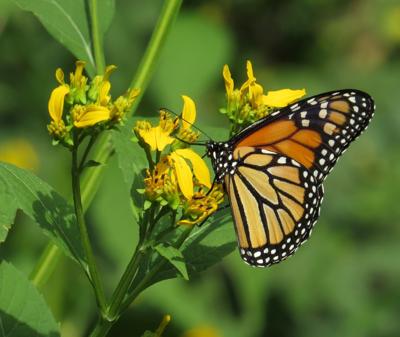
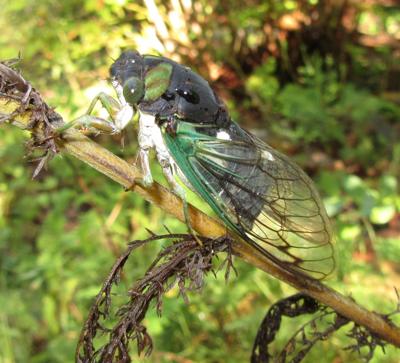
You must be logged in to post a comment.